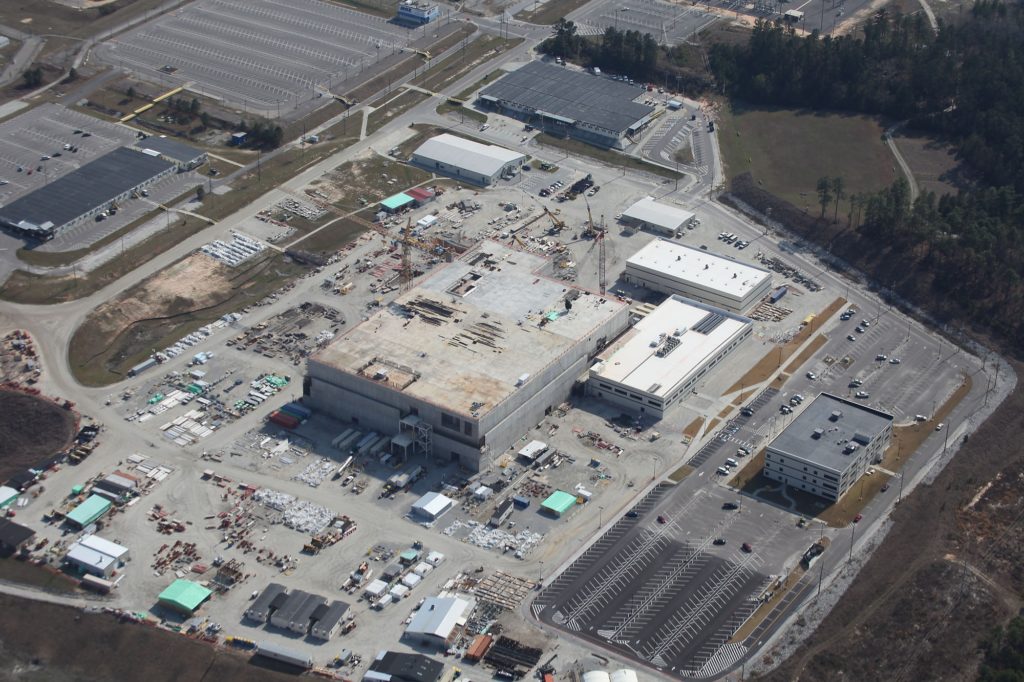As the fourth and final Nuclear Security Summit convenes today, here’s an idea for a great parting gift that President Obama can offer to the international community. The United States possesses a unique asset that could be used to train nuclear security guards in a realistic setting: the partially built Mixed Oxide (MOX) Fuel Fabrication Facility at the U.S. government’s Savannah River Site (SRS) in South Carolina. Using this complex as an international training center would help strengthen global nuclear security and give new life to a facility that otherwise appears destined for the scrap heap.
Although the U.S. government initiated the Nuclear Security Summit series and has coaxed other nations to bring “gifts” in the form of concrete steps to reduce the threat of nuclear terrorism, its own commitments have been modest. It has provided funding and expertise to establish nuclear training and support centers in other countries, generically called “centers of excellence,” but it has not established such a center here at home.
Repurpose the MOX Facility
The MOX complex provides the United States with a golden opportunity to remedy this situation. The facility was intended to be the centerpiece of a program to dispose of approximately 50 metric tons of plutonium that the United States no longer needs for nuclear weapons by fabricating it into MOX fuel for nuclear power plants. MOX facility construction has already cost taxpayers about $5 billion, however, and it will cost another $7 billion to $9 billion to finish it. If completed, it will cost another $15 billion to $35 billion over the next several decades to produce the fuel and implement the program.

The MOX Fuel Fabrication Facility, under construction. (Source: Friends of the Earth)
Cost overruns and projected delays have prompted the Obama administration to try to terminate the program and develop less costly alternatives. Unfortunately, elected officials from South Carolina are continuing to protect this facility in classic pork-barrel fashion. Sen. Lindsey Graham, one of the project’s most outspoken supporters, has repeatedly raised questions about the site’s future if the program is cancelled.
To date, the administration has said nothing about how the multibillion-dollar building might be repurposed. But it is doubtful that there are any cost-effective alternate uses for it as a nuclear material processing facility. In the absence of alternatives, the MOX facility seems destined to endure as a half-built monument to poor planning and political dysfunction.
The good news is the MOX plant is a nearly complete, industrial-scale building designed to meet stringent security requirements, making it an ideal site for a nuclear security training center that could help reduce the threat of nuclear terrorism and preserve the site’s economic value. Nuclear security forces from around the world could develop and test strategies at the MOX complex for defending sites from terrorist groups seeking to steal nuclear-weapons-usable materials or cause a radiological disaster via sabotage. The site would provide a venue for training in perimeter defense strategies and the tactics used in close quarters combat, augmenting the less comprehensive offerings at centers of excellence in other countries.
Experience has shown that security plans that look good on paper may be deeply flawed in practice. The United States regards force-on-force performance testing as the gold standard for assessing guard effectiveness at commercial and government sites. Most countries do not mandate such testing, however, in part because force-on-force performance exercises are difficult and potentially dangerous to carry out at operating nuclear facilities. The repurposed MOX facility could host force-on-force tests for both domestic and foreign security organizations and help standardize security team performance internationally.
Any plan to turn the MOX facility into an international training center would need to address the challenges of providing access to foreign nationals. Fortunately, the MOX facility is physically isolated from sensitive activities at the Savannah River Site, and there is a precedent: the United States already provides training for international safeguards inspectors at Los Alamos National Laboratory in New Mexico.
In sum, it makes no sense to continue to waste taxpayer dollars on a facility to produce MOX fuel. On the other hand, it makes complete sense to establish a nuclear security training center of excellence at the MOX facility site. User fees could provide a steady source of funding for the project, and the U.S. government could provide the training personnel.
Doing so would not only make good on the promise of jobs for the regional economy for decades to come, but also would reinforce the Savannah River Site’s role as a leading institution promoting nuclear security worldwide.
